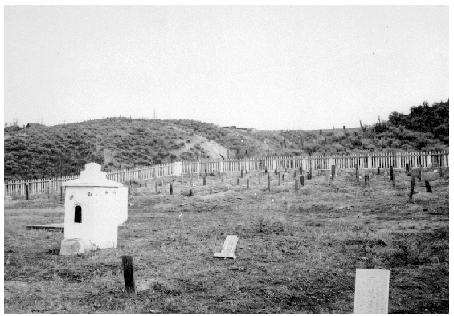Anti-Chinese Politics

Chinese cemetery; Kamloops.
(Image B-004519 courtesy of the Kamloops Museum and Archives)
When British Columbia entered Confederation in 1871, the creation of the first provincial legislature coincided with the growth of anti-Chinese political movements in places such as California and the Australian colonies. The use of anti-Chinese political rhetoric in the new province of British Columbia helped build early political coalitions around a racist ideology. A crucial political strategy was to deprive non-whites of the vote, and Chinese in British Columbia lost the vote in 1871 as the new legislature passed an act to disenfranchise “Native Indians,” Chinese and other non-whites.
Cities and municipalities in British Columbia adopted the same strategies, and Chinese Canadians, now unable to vote in elections, became the scapegoats and targets for political movements that used anti-Chinese discrimination and legislated racism to rally voters. From the 1870s onward, racial discrimination against Chinese Canadians became a mainstay of British Columbia politics, culture and society. In Nanaimo and Kamloops, for example, civic governments segregated Chinese Canadians, attempting to confine them to the outskirts of town.
As geographer David Chuenyan Lai writes, “Even after death, the Chinese were segregated from Westerners. Ross Bay Cemetery in Victoria, for example, was divided into 21 blocks of which Block L was set apart for the burials of ‘Aborigines and Mongolians.’ The Burial Records reveal that the first Chinese person interred there on 18 March 1873 was listed as ‘Chinaman No.1’ and subsequent Chinese burial plots designated as ‘Chinaman No.2,’ ‘Chinaman No.3’ and so on.”
